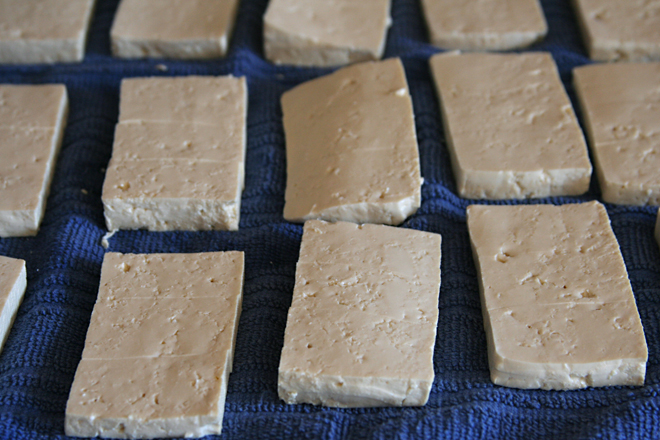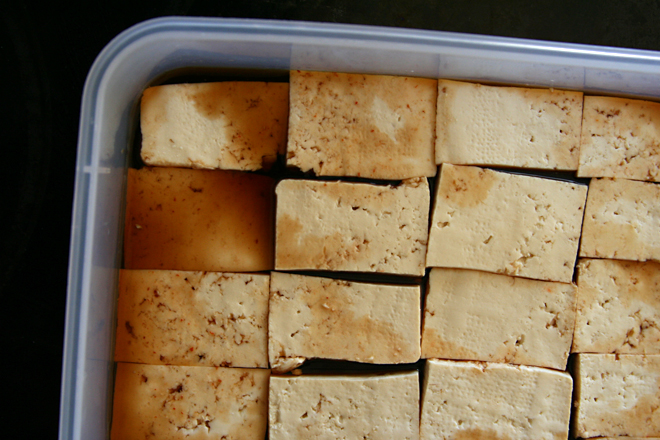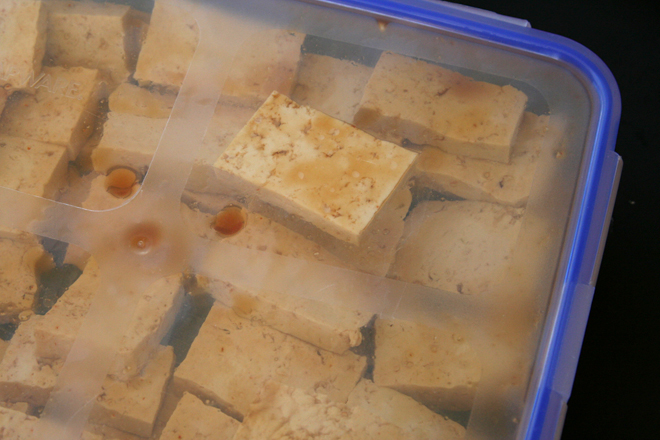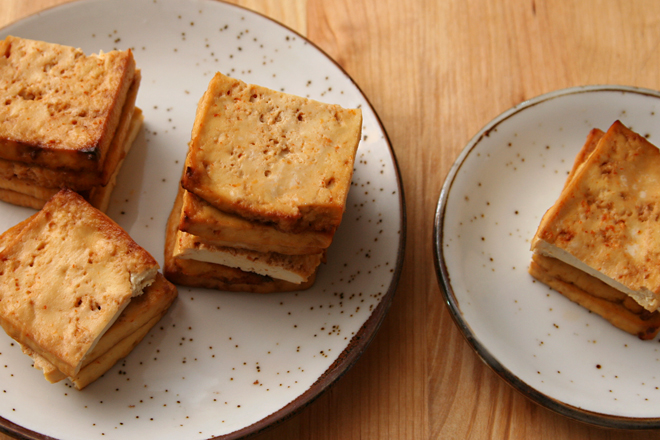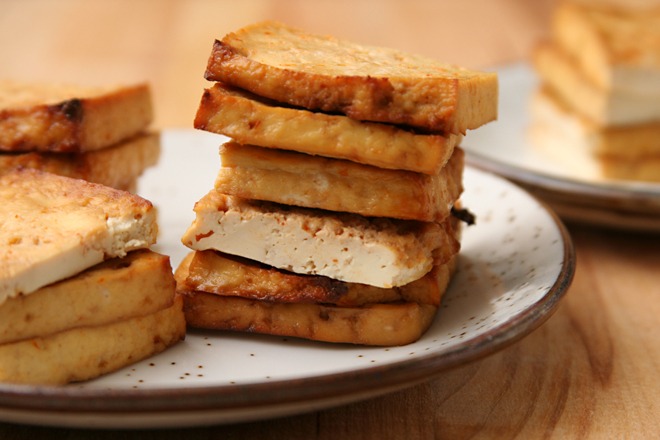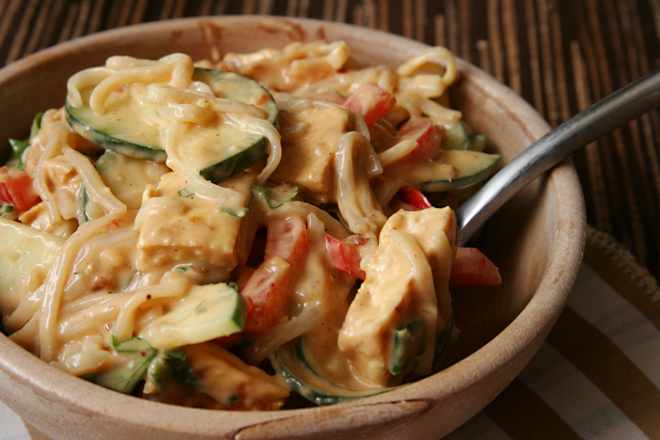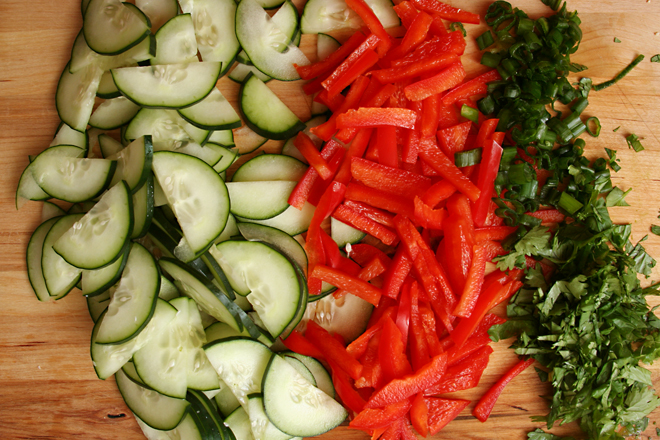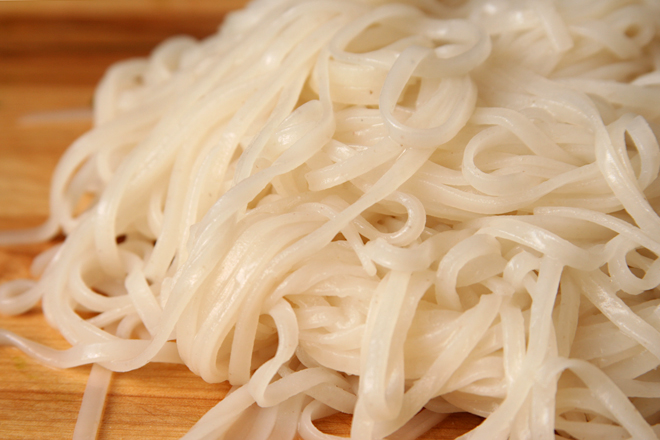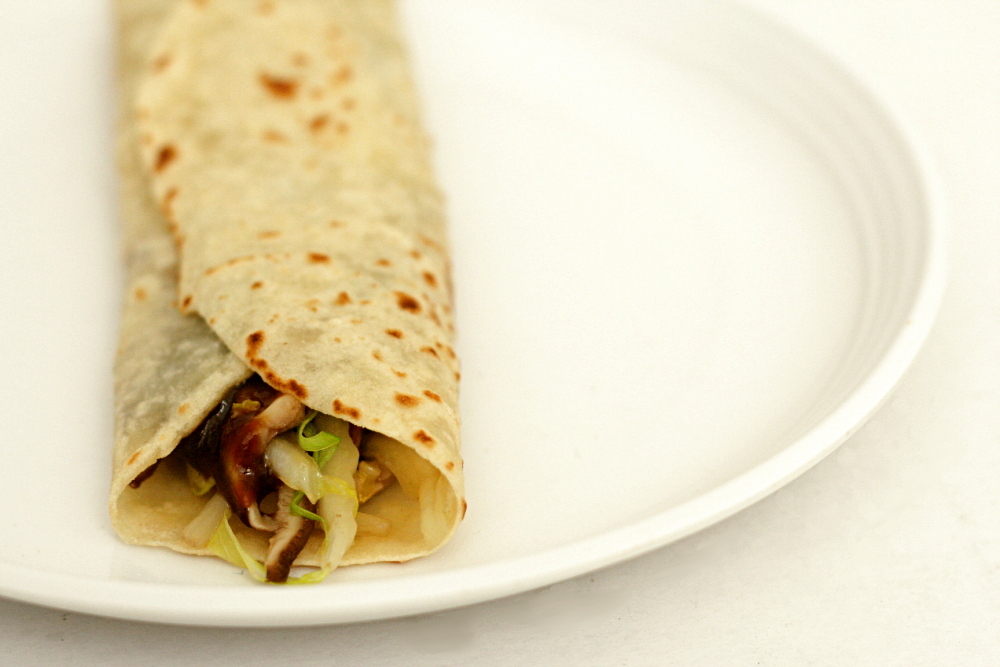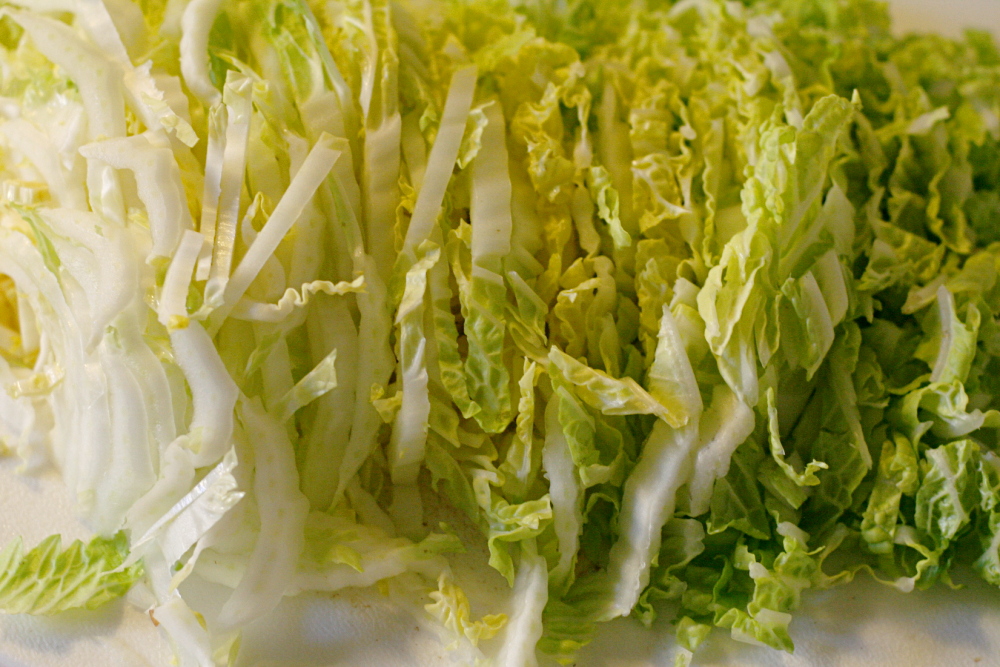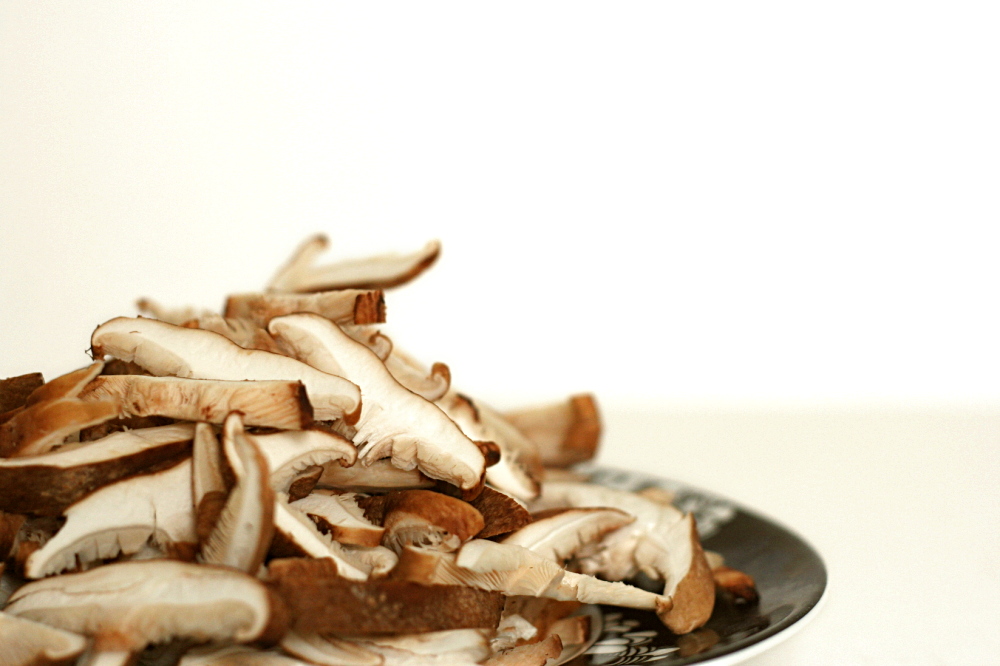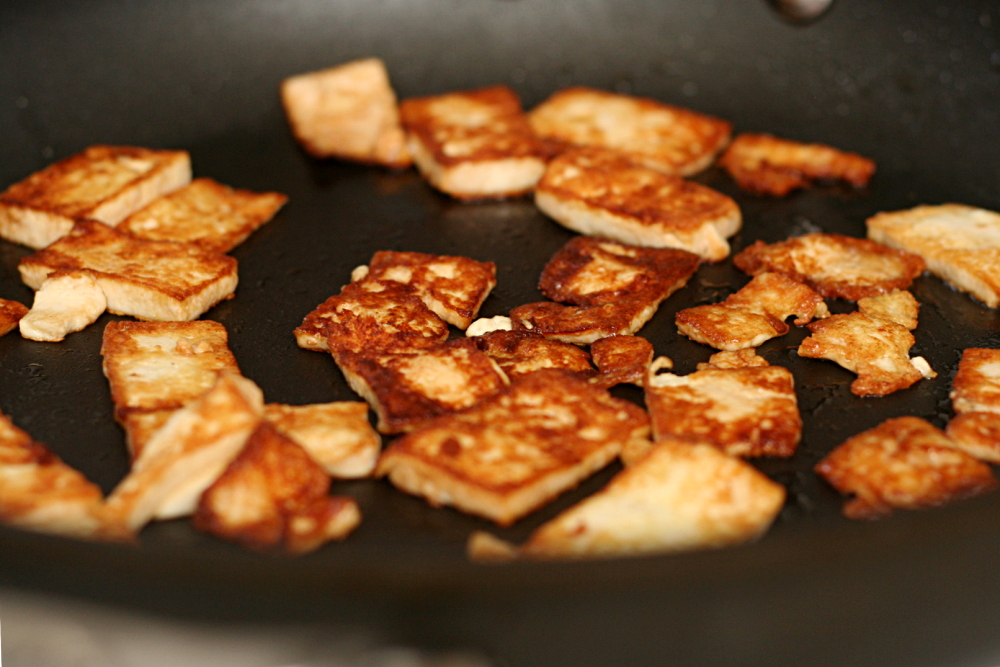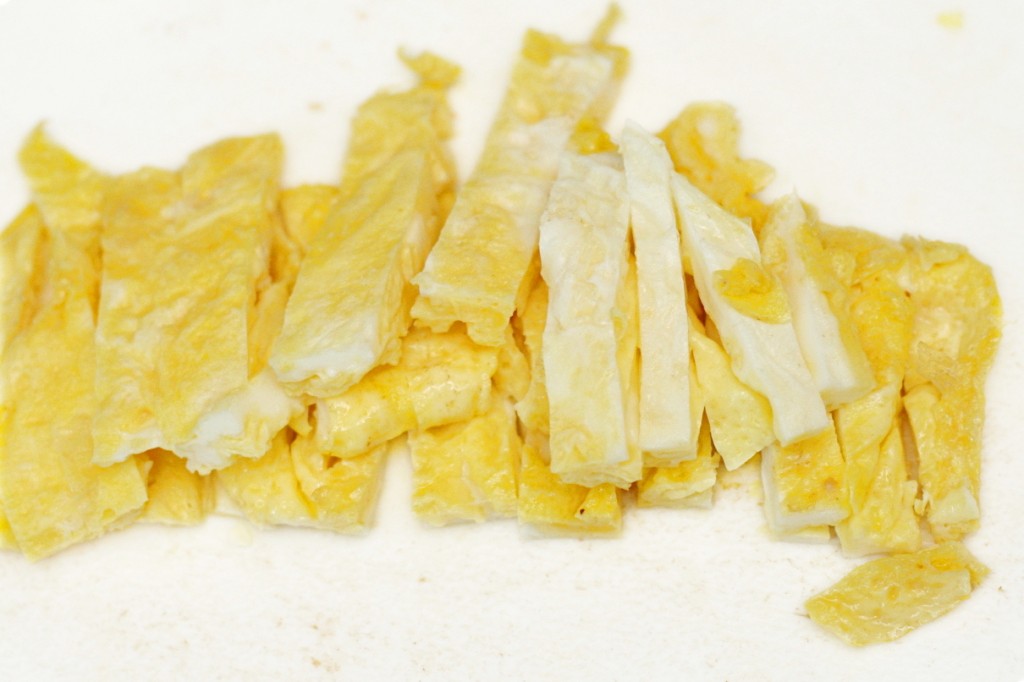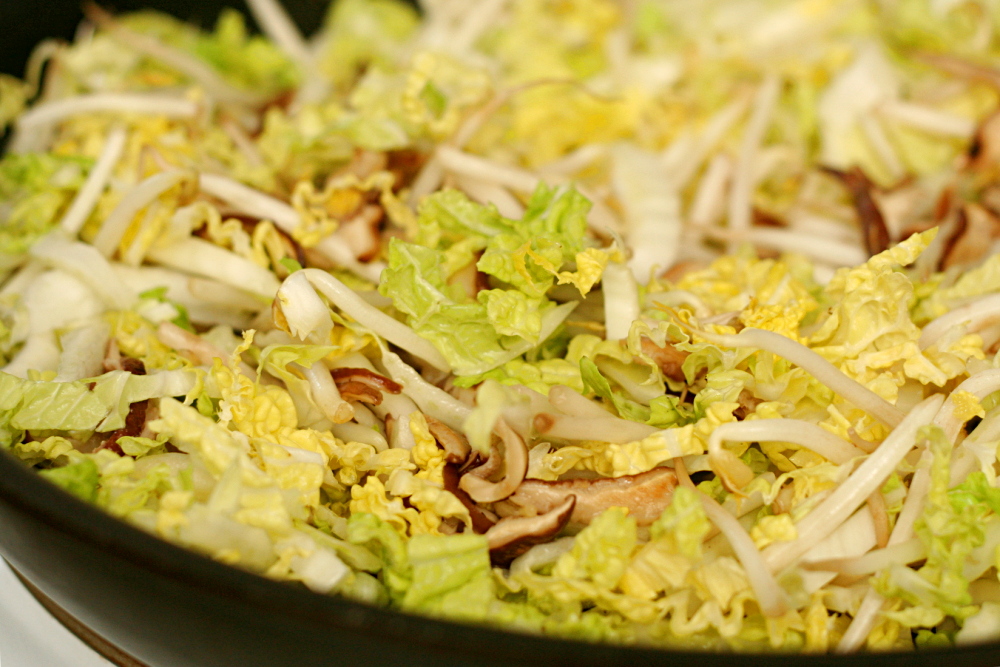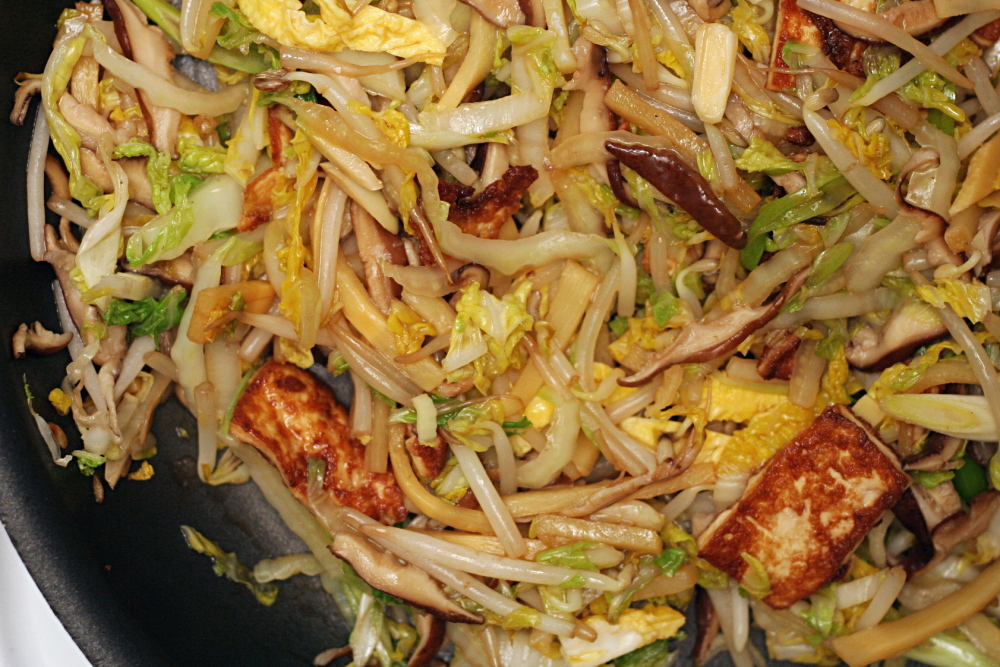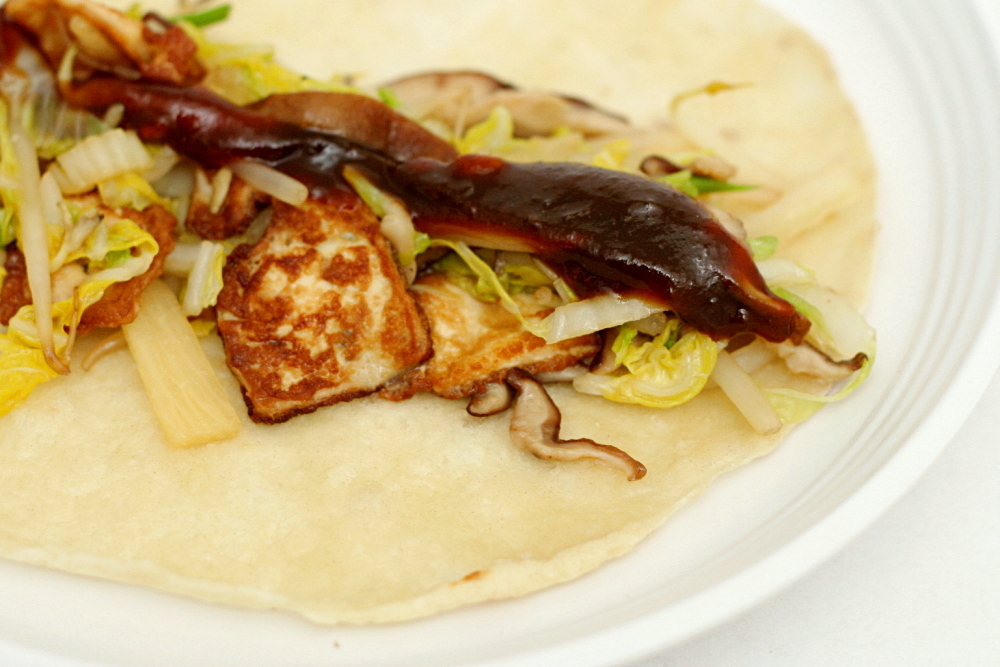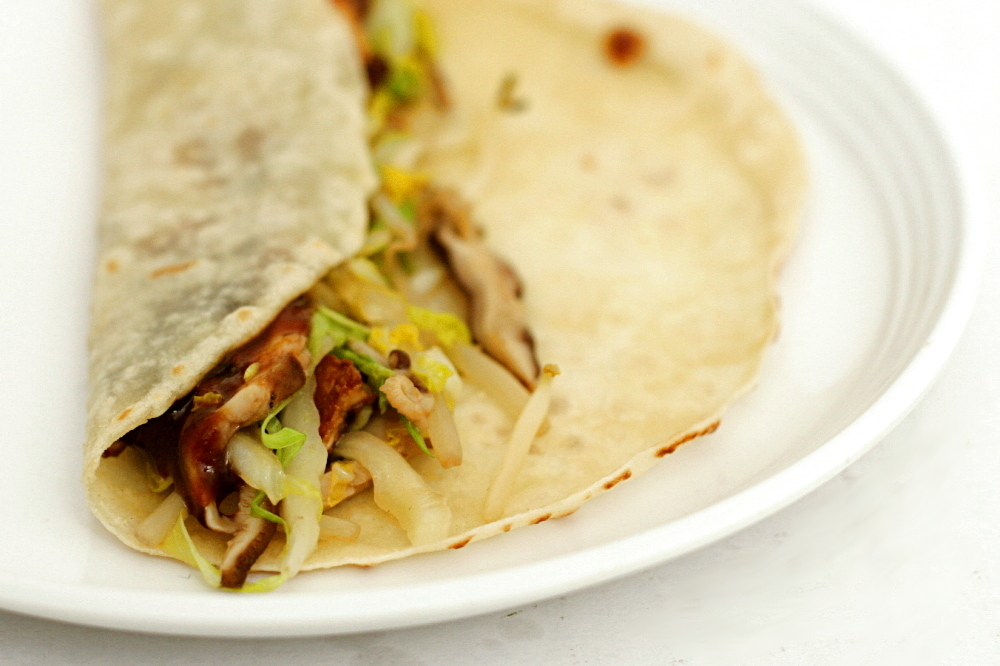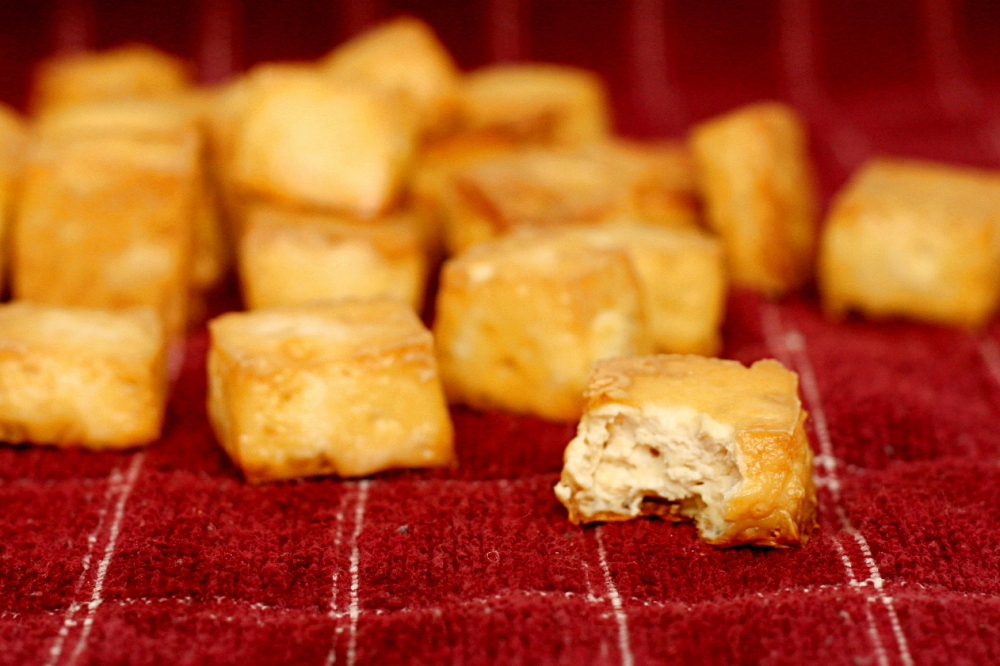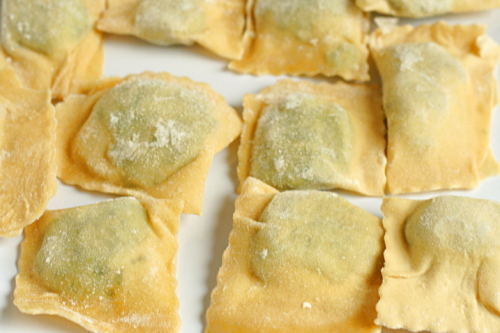I cannot eat another hard-boiled egg. For a long time, it seemed like the perfect snack to bring to work – portable, easy, packed full of protein and nutrients. And, most importantly, I loved hard-boiled eggs. The creamy yolk balances the watery white, and I would try to get just the right ratio of each in every bite.
A year and a half later, they’ve lost their charm. I considered switching to a new snack before it reached this point, but I couldn’t figure out what would have similar nutrient characteristics. I already eat plenty of beans, nuts, and dairy, so I needed a new protein source.
Soy is a comparable replacement, nutrition-wise, for eggs, but digging into a cube of spongy tofu wasn’t appetizing. But tofu is perfect for marinating, because it soaks up whatever flavor you add. Then you can roast it to concentrate the flavors of the marinade and firm up the texture.
I’ve eaten this tofu every afternoon at work for three weeks, and so far it’s one of my favorite daily snacks. (Still doesn’t hold a candle to my morning bagel, of course.) I’m sure I’ll go back to hard-boiled eggs eventually; maybe in another year and a half, when I get tired of tofu?
One year ago: Pasta e Fagioli
Two years ago: Oatmeal Raisin Muffins
Three years ago: World Piece Cookies
Four years ago: Chocolate Cupcakes
Printer Friendly Recipe
Marinated Roasted Tofu (adapted from Jeanne Lemlin’s Vegetarian Classics)
Serves 4
I like these plain as a snack, but they also make a good sandwich filling.
The pictures might be confusing – the first couple times I made these, I sliced the tofu into slabs and then cut the slabs into thirds. Later, I got annoyed with arranging so many little tofu bites (I always make a double batch) on the cooling rack, so I kept the tofu as larger slices and cut them in half after baking.
1 pound firm tofu, drained
1½ tablespoons soy sauce
1 tablespoon dry sherry
1 tablespoon rice vinegar
1 teaspoon toasted sesame oil
1 teaspoon sriracha (optional)
1. On a dishtowel, slice the tofu crosswise into eight slabs approximately ½-inch thick. Arrange the slices in a single layer; cover with a second dish towel and pat dry.
2. Meanwhile, mix the remaining ingredients in an 8-inch square container or baking dish. Add the tofu to the marinade in the dish; stir gently and set aside for at least 30 minutes, or refrigerate, covered, overnight.
3. Heat the oven to 450 degrees. Arrange an oven-safe cooling rack on a baking sheet. Transfer the marinated tofu slices to the cooling rack. Roast until dry and browned at the edges, 25 to 30 minutes. (If you don’t have an oven-safe cooling rack, bake the tofu in a baking dish in a single layer.) The roasted tofu can be refrigerated for at least 5 days.

